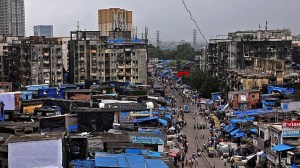Stay updated with the latest - Click here to follow us on Instagram
Legal tussle takes toll on highway users
SC to hear case on NH 1 between NHAI and private firm on Aug 6
In 2008,when the six-laning of Panipat-Jalandhar section of National Highway 1 popularly called the GT road was started,the project was expected to be completed by now.
However,the National Highways Authority of India (NHAI) and private company Soma Isolux,which had undertaken the project,are currently caught in a legal battle that has now reached the Supreme Court. For one year now,the work on the project is at a standstill.
The project has missed three deadlines November 2011,February 2012 and June 15,2012. The users of this 291.1-km stretch on the national highway,however,are paying toll for the use of an under-construction road at three places from the day construction began on the project.
On May 27,the Punjab and Haryana High Court had ordered that the NHAI should take over the project and complete it within six months. The toll collected during this period was to be deposited in an escrow account. Soma moved the Supreme Court,which stayed the high court order. The case will now be heard by the Supreme Court on August 6.
The NHAI had awarded the project to Soma in May 2008. Masking it as a new PPP model in infrastructure projects,the NHAI signed a contract that allowed Soma to collect toll from the day it began construction,unlike most other projects where toll is to be collected after the completion of the project.
Soma is now collecting toll worth Rs 24 crore per month from users at Nilokheri (just beyond Karnal on way to Ambala),Shambhu barrier and Ladowal (near Ludhiana). In 2011,it decided to shift the toll plazas at Nilokheri and Shambhu barrier. At Nilokheri,Soma wanted to shift the toll plaza before Karnal so that toll could be collected from commuters coming up to Karnal from Delhi. Similarly,at Shambhu barrier,it wanted to shift the plaza to include commuters using the Banur-Kharar road.
While Soma claimed that the demand was well within the bid conditions,the NHAI maintained that any change in toll plaza locations amount to a change in sum and substance of the original bid,which is not permitted under the rules. Soma,however,claimed that this is an afterthought on part of the NHAI,as it had on more than one occasion approved the shifting of toll plazas.
The NHAI,however,refused to accept this. If someone somewhere made a mistake,it does not mean we have to stick to it. We are holding an inquiry into how and under what circumstances the approval was given, said a NHAI officer.
The NHAI has also pointed out in the Supreme Court that Soma has earned much more from the tolls Rs 750 crore than it has invested in the project till now. The total project cost (TPC) as envisaged by NHAI at the bidding stage was Rs 2,747 crore. The company is required to put up an equity of about Rs 700 crore (30% of TPC) and debt of about Rs 2,050 crore for implementation of the project, the NHAI affidavit stated.
Soma,however,stated that the TPC was Rs 4,500 crore and almost Rs 3,300 crore has already been spent on it. Our bankers are now backing out as they are not sure if the project will continue to be economically viable if the plazas are not shifted, said a company official.
While Soma was collecting almost Rs 24 crore a month from tolls,the interest on the loans it had taken from banks,operation and maintenance costs and the amount to be shared by NHAI totals up to Rs 34 crore a month. In the end,it is losing Rs 10 crore a month on a non-operation project.
However,a NHAI official said: Even if the TPC projected by the company is accepted,the net amount spent by it as equity is in the range of about Rs 550 crore.







